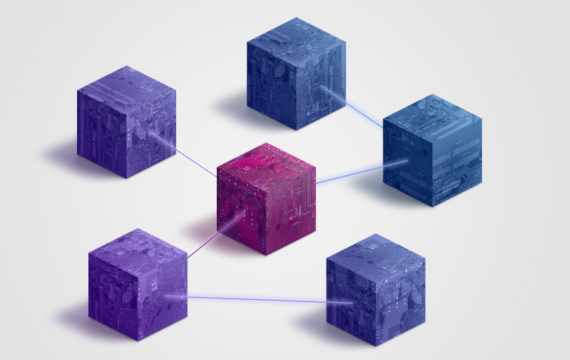The insurance industry underwent considerable change in 2025 thanks to a faster pace in technological development and increased digitization. In the Latin America region, insurers are experiencing near-exponential growth across various sectors; the Europe sector remains robust; and other regions maintain competitiveness. There’s a huge opportunity across the global market; the challenge is adapting to new technology trends in the insurance industry.
New insurance trends offer plenty of opportunities for insurance companies. Still, they also present challenges that can do everything from disrupting your day-to-day operations to posing a major threat to your project’s long-term profitability and viability.
As such, you should ensure that you’re prepared for whatever comes in 2026 by identifying the most important technology and digital insurance trends, and plan to adapt to or integrate them. It’s not just about improving your processes or outperforming your competitors; consumers expect greater choice and improved customer service from new technology too.
Our insurance technology trends list will help you get ahead of the pack by providing you with the top 10 strategic insurance tech trends in 2026. Implement what you learn therein, and your company will have started the new year on the right foot.
Out Top 10 Strategic Insurance Technology Trends
Increased AI Adoption
It should come as no surprise that artificial intelligence (AI) starts our list of technology trends in insurance, after all, AI is becoming increasingly common in almost any industry one can think of. In the insurance industry specifically, AI has the potential to significantly improve the speed and accuracy of claim processing.
AI as tech in insurance can promote intelligent decision-making, significantly reduce the risk of human error, and create better predictive modelling to monitor risk. As part of a digital transformation process, it is also being used by insurance companies to improve their customer support services. This is primarily achieved via AI-powered chatbots that interact with and support their clients.
The particular challenge that AI is likely to pose is related to its perception of trustworthiness amongst the general public. Customers like the improved customer service and efficiency it can offer but still often prefer the ‘people factor.’
According to a study carried out by Deloitte insurance companies and their customers alike will need to learn to ‘trust our AI colleagues.’ If insurers can do so, they can pass over routine and repeatable tasks to AI systems that can carry them out reliably, allowing human colleagues to focus on more qualitative issues like case intervention and investigations, and higher-level customer support.
Embedded Insurance
Embedded finance has generated considerable buzz in the finance industry recently, with the subject coming up at several key events like Web Summit. At the conference, some attendees expressed concern that the concept wasn’t achieving what it should.
There was a notable perception that embedded finance’s predicted high volume of big-name brands adopting its related services had failed to materialize and that it represented a ‘private member’s club.’ In 2026, we can expect to see this perception change as embedded finance increases its presence as a technology for insurance – Embedded insurance.
Embedded insurance will allow non-insurance companies like travel agents, vehicle dealerships, and e-commerce retailers to offer insurance policies at the point of sale, providing significantly increased choice and cost efficacy to the consumer.
The customization options offered via embedded insurance are considerable and should allow consumers to access highly personalized insurance policies without having to trawl through comparison websites and third-party services. Like embedded finance, the challenge posed by embedded insurance will likely be a combination of government regulations, and ensuring legal guarantees for consumer protection.
Internet of Things
The Internet of Things (IoT) has been around for some time, and while it may not exactly be one of the newest insurance tech trends, we can expect to see companies allocate more time and resources to the concept in 2026. IoT, which refers to a collection of physical items that communicate with other similarly equipped devices via sensors and software, has a correspondingly large number of potential applications. One of its most interesting applications for insurance companies is risk management, through which IoT could significantly improve corporate performance and cost-effectiveness.
Insurance companies and automobile manufacturers have long worked closely together, as vehicle insurance is one of the most common policies on the market. This is where we can see the full potential of IoT risk mitigation. IoT-connected sensors can be used to control a vehicle’s speed, engine pressure, oil and fuel levels, etc.
Insurers can use these sensors to check that the vehicle they have insured is operating safely, reducing the risk of costly insurance claims due to improper handling. The same technology can also be applied to various other insurance policy formats to ensure that the customer is meeting their liabilities.
Drones

The idea of drones being among the most significant insurance industry technology trends in 2026 might sound unusual at first, but it’s true. Drones are not just among the current trends, going to play an increasingly important role in the insurance industry.
The reason why is linked to a previous entry on this list, namely the Internet of Things. Thanks to the increased connectivity offered by improvements to IoT, insurers will be able to operate fleets of drones for two key purposes.
Risk Assessment:
Drones can be used to access areas that are difficult or dangerous for humans to do so. Insurers can then utilize the information captured by the drones to create accurate assessments of damage, loss, liability, and other factors.
Claims Assessment:
Insurance companies can use drones to rapidly respond to accidents, natural disasters, etc. to collect evidence and estimate potential costs, which is particularly useful for life insurance policies. This also helps companies significantly reduce the risk of fraudulent claims.
It’s this last point that could be particularly appealing to insurance companies. According to the previously mentioned report by Deloitte, bogus claims cost insurance companies an average of $32 billion a year. As such, IoT-empowered drones could play a major role in reducing this stark figure.
Robotic Process Automation
Robotic process automation (RPA) refers to the use of software bots to automate routine tasks, and while this is similar to what advanced AI technology can offer, RPA does deserve a category of its own amongst IT solutions. RPA is best used to increase operational efficiency and enhance your customers’ experiences by bridging the gap between legacy insurance systems and modern software.
RPA can copy and paste data between different apps, open emails, and add information contained therein to a central data core. You can also add AI systems to enhance your RPA bot efficacy.
Insurance companies can use RPA to automate high-volume claims that don’t require a human to provide qualitative oversight, processing large volumes of information in a streamlined process.
RPA is particularly useful during the underwriting process as it can rapidly analyze multiple data sources (including unstructured data). It can then process the findings to display them on a central dashboard, highlighting important findings for the entire team.
Insurers are also using RPA to rapidly create new policy innovations for consumers based on their claims and payment history, including on-demand quotes.
Mainframe Modernization
Issues related to legacy systems don’t just start with RPA, and another issue to look for among technology trends in the insurance industry in 2026 is the process of mainframe modernization, something that is long overdue. Many insurance companies believe that their current mainframe infrastructure is working acceptably for them, but that’s only without considering how changes or technological updates could have an impact. Insurance technology is advancing at a rapid pace, and it won’t be long now until legacy mainframes are insufficient for handling the latest updates, new products, software, and other factors.
Insurance companies that modernize their mainframe infrastructure now rather than in the future stand to benefit from increased performance and improved efficiency, achieving a significant competitive advantage over their competitors. That’s because improvements to legacy mainframes allow for significantly improved utilization of company data.
Insurance and technology data often spans decades and contains highly valuable information about claims history, risk assessments, customer profiles, etc. Companies looking to upgrade their existing mainframe infrastructure should engage with specialists like Intellias before doing so, as this process is complex and requires highly individualized solutions.
Increased App Development
Thanks to advances in several factors, including data and analytics, AI, machine learning, and others, in 2026 we can expect to see increased development in insurance app production, both in terms of numbers and quality. Dedicated apps are extremely popular with consumers, and according to a study by Allied Market Research, digital-only insurance brokerage platform downloads have increased by about 461% over the past three years.
Investors have taken note. The same study found that over $6 billion was poured into insurance tech apps in 2021 alone, the last year when figures were available to Allied Marketing Research
Several concepts are particularly promising to existing insurance companies or new market entrants looking to develop their own app. These include AI-powered advisors that can process enough data to explain complex insurance terminology to customers and provide customized advice.
On-demand microinsurance, covering various factors including per-day insurance, connection with mobile wallets, and short-trip travel insurance, is also promising. Finally, IoT-based home monitoring apps weld technology and insurance to allow customers to monitor alarms, locks, lighting, etc. to monitor and reduce their risk profile, which could result in significant cost savings via improved insurance premiums.
Cyber-insurance and Cybersecurity
Cybersecurity risks are at their highest levels in decades, and emerging threats are likely to appear in 2026 that will pose serious challenges to insurance companies. According to the World Economic Forum (WEF), in the last five years, 50% of all ransomware attacks in the USA originated from a single remote access tool (RDP) built into the Windows operating system.
Worldwide, billions of people are at risk. According to the WEF, the insurance industry has the data, expertise, and motive to determine what can help reduce cyber risk to an insurable level.
The insurance industry has often acted as an unofficial regulator by mandating that certain safety and security conditions are met before policies can be granted to companies and individuals. For example, airbags were not mandatory in the USA until the insurance industry collectively sued the federal government.
Cyber-insurance policies, which would demand the highest level of software protection, data protection practices, and other key issues in fighting cybercrime, could play a major role in 2026 and beyond. The result, namely higher premiums for companies or individuals using low-quality or outdated cybersecurity software, could likely lead to a widespread change in consumer behavior, cutting the risk and impact of cyberattacks in the process.
Digital Ecosystems
Digital ecosystems are going to become increasingly prominent in 2026. This is due to big tech companies continuing their push to make their app or platform the catch-all service for whatever their users require.
This was the stated aim of Elon Musk when he bought Twitter and renamed it ‘X,’ Uber has expanded into multiple other services, including food delivery and train tickets, and Amazon has become a cultural and media icon. According to consulting company McKinsey twelve distinctive and massive digital ecosystems will emerge around fundamental human and organizational needs, with a combined worth of $70 trillion.
Insurance companies can achieve this by ensuring maximum efficiency for their end-to-end processes, along with adapting corporate flexibility and agility. By acting as early adopters, companies that successfully integrate with expanding digital ecosystems are likely to profit from a significant new customer base that values the ease with which they can access insurance policies.
Augmented Reality

Another technology that generated a lot of interest last year was augmented reality (AR). While in 2026 the technology will probably not experience large-scale uptake by insurance companies, it is something that early adopters will look to integrate into their digital strategy.
AR works by superimposing text and visuals over what the user perceives as the real world, merging two realities into one. AR is highly adaptable and insurers will be able to use this technology for various applications.
Employee Training:
Onboarding programs can be customized for maximum effectiveness for each department, team, and new employee. This will allow them to do more training on the job, reducing time spent on the company adaptation process.
Claims Assessment:
Using AR headsets, insurance claims assessors won’t have to make time-consuming on-site visits and can instead use live calling to visit properties or individuals covered by health insurance virtually. This will free up a considerable amount of their time, allowing them to process more claims.
Customer Service:
There’s some evidence that customers report increased satisfaction when insurance companies use AR technology. Proponents argue that AR reduces the claims cycle, provides faster support, and provides an overall more qualitative and immersive customer experience.
Get Ready for Technology Trends in the Insurance Industry
This coming year is likely to prove exciting for those working in the insurance industry and in related sectors like fintech. It’s a year likely to be full of potential disruptors, challenges, and opportunities, so it’s vitally important that you prepare.
Whenever you decide to implement innovations or technological developments for your insurance company, you should first consider whether that’s within your current technical means. New technology and ideas can pose significant problems if not implemented correctly, which is why you should engage Intellias to access our specialist support.
Intellias has worked at the vanguard of insurance industry technology for over a decade. In that time, we’ve been able to provide our clients with a large range of services dedicated to ensuring you make the most of new strategic technology.
We can provide support with execution design, digital infrastructure, product innovation, and IT as a service to help your insurance tech project get up and running. We also provide ongoing assistance with cybersecurity, integration services, data engineering, and intelligence automation, all of which will help you get to grips with 2026’s key insurance tech trends.
If you want to learn more about how Intellias can help your insurance company meet the various challenges and opportunities that 2026 has in store, then don’t delay – Send us a message via our contact form today. One of our insurance tech specialists will get back to you promptly and start the process of creating an individualized plan for your company that will support you in adopting the latest strategic technology available.
Also, make sure you check out the rest of our blog page for more articles about the insurance industry and related sectors to stay abreast of all the latest developments. Stay subscribed and liked to our social media, and have a wonderful new year.




